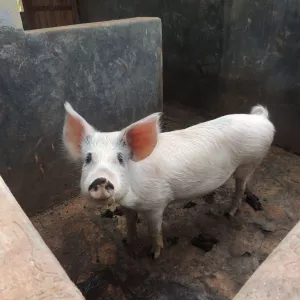New mapping study of Rwanda pig value chain analyses governance and sanitary risks
The pig production sector in Rwanda is growing rapidly as a result of rising local and regional demand for pork. To better understand how the sector operates, a new study has analysed the country’s pig and pork value chains to map the various actors involved, the governance and sanitary risks and the potential impacts on food safety. The study, which

New mapping study of Rwanda pig value chain analyses governance and sanitary risks
The pig production sector in Rwanda is growing rapidly as a result of rising local and regional demand for pork. To better understand how the sector operates, a new study has analysed the country’s pig and pork value chains to map the various actors involved, the governance and sanitary risks and the potential impacts on food safety.
The study, which is published in Frontiers in Veterinary Science (Jan 2022), was carried out by a team of scientists affiliated to the International Livestock Research Institute, the University of Global Health Equity, the University of Leeds, the University of Liverpool and the University of Rwanda.
The findings of this study will be useful for policymakers to design interventions to address the weaknesses identified in Rwanda’s pig value chain towards improving food safety and safeguarding the health of consumers.
Citation
Shyaka, A., Quinnell, R.J., Rujeni, N. and Fèvre, E. 2022. Using a value chain approach to map the pig production system in Rwanda, its governance, and sanitary risks. Frontiers in Veterinary Science 8: 720553.
Photo credit: Pig in concrete stable in Mukono District, Uganda (ILRI/Elisabeth Kilian)

